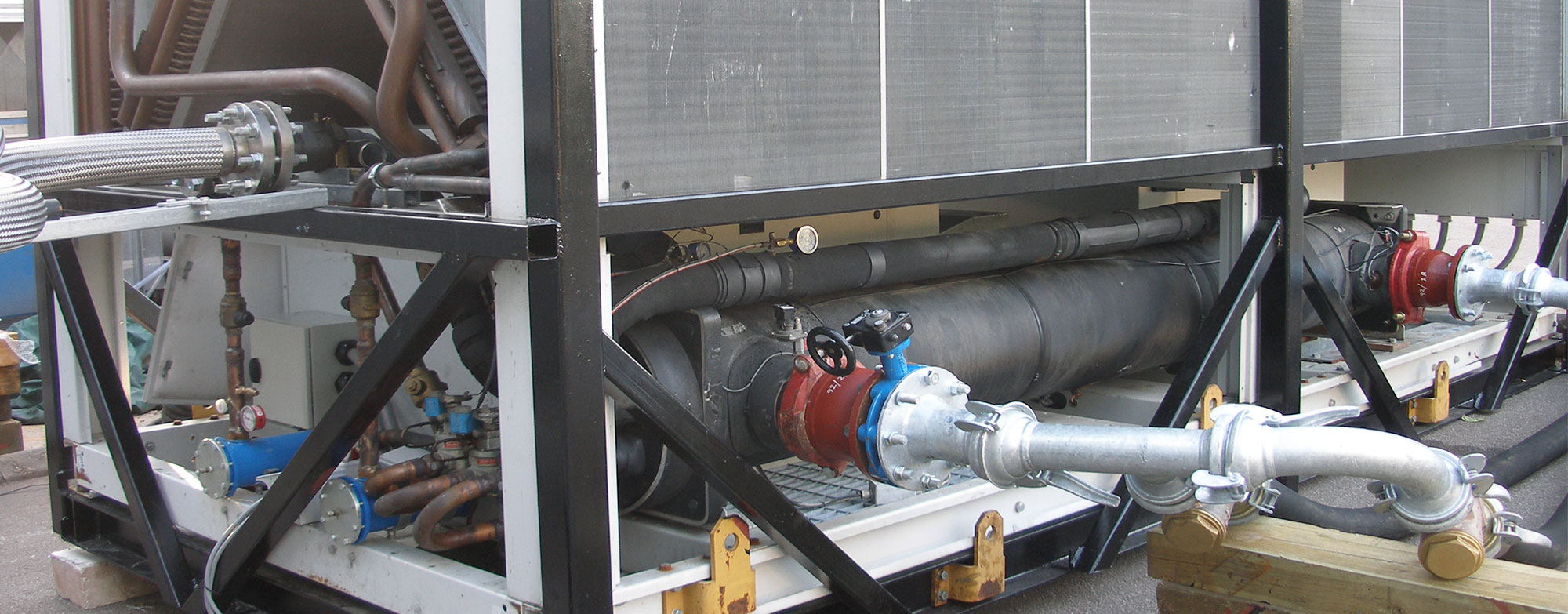Chilled Water-Based Cooling Systems
Maintain consistent room temperatures throughout buildings
Chilled water-based cooling systems are commonly used to maintain consistency in room temperatures throughout buildings and sometimes offer inhabitants of smaller areas, the comfort of personal settings. They represent a large initial capital outlay, require a designated floor space and if not managed properly, can expose the buildings to high electricity and maintenance costs. They still offer greater benefits over air-cooled packaged units that rely on air ducts to transfer cooled air to a designated point. Water is a more efficient energy conductor and requires less piping space than an air duct system. In addition, water-based chillers offer better energy efficiency, a higher degree of overall temperature control (flexibility) and a longer lifespan.
It is important to match chiller plant size and piping network to the required amount of temperature control. Too small and the system is overwork, too large and the system wastes capacity. Significant energy savings can result if chiller selection, sizing, and staging acknowledges the dynamic nature of chiller efficiency dependencies, including the building load and heat rejection temperatures. A key factor is variable speed chiller plants that offer flexibility to adapt to changing buildings conditions and seasonal changes.
Retrofitting or upgrading existing chiller plants is also a viable option. Results of up to 60% energy reduction costs have been recorded if the correct configuration, control, and maintenance have been implemented. Retrofitting involves replacing existing operational controls with a broader networked control strategy. There are a number of feature/products add-on components available that offer the building owner/manager automated control that optimizes the chiller operation under all loading conditions. In addition, there is a new methodology for making sure the plant operates at commissioned levels for the life of the system.
It is worth making the changes now as some Governments in Africa have already introduced chiller efficiency requirements through regulation. In the case of South Africa, it is through the SANS 204/2011 brief (South African National Standard). This standard specifies the design requirements for energy efficiency in buildings and of services in buildings with natural environmental control and artificial ventilation or air conditioning systems.












